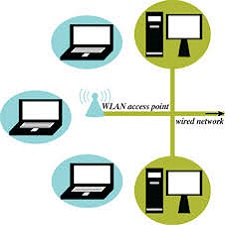توضیحات
Nowadays Fraudulent messages by criminal intent have become a complex problem in internet communications
Many people rely on these kinds of emails and lost their fund as a result. We consider e-mail messages to be of three types: ham, spam, and scam. “Ham”, refers to legitimate e-mail messages. “Spam” messages are unsolicited pieces of email. The “Scam” messages are a subset of spam messages which are intelligent in design, such that they attempt to coax the individual to perform some action of illegal purpose beyond a simple “click me”. While most spams are harmless, scams are engineered by criminals; they earn a considerable amount of money from internet users who read scam messages stories and believe them. In 2003, the FTC reported the American public lost over $400 million to fraudulentactivities. Scams communicated via e-mail and the Internet is on the rise as well. Brightmail reports that over three billion scam emails are now sent monthly over the Internet, noting a 50% increase from January to April 2004 alone. In March 2004, Zachary Hill was arrested by the FTC and the Department of Justice for identity theft and illegally attracting people via e-mail to fake websites masquerading as AOL and PayPal. During the tenure of his scam, Hill obtained at least 471 credit card numbers, 152 bank account and routing numbers, and 541 user names and passwords [2]. Many approaches have been proposed for the task of spam detection. The mostly used approaches are based on Bayesian Classifier and Naïve Bayes [9,16]. Naïve Bayes is simple and its accuracy is acceptable. Also K-Nearest Neighbor has been used to its simplicity and speed. Other approaches like Support Vector Machines, Decision Trees, Artificial Neural Networks, and many other machine learning methods or combinations of them have been used. A description of such approaches is discussed in section 3. However, all these approaches perform well on static datasets, but scam messages changes dynamically and such approaches are not suitable for detecting them. While a simple spam filter can filter out spams very good, most scams can pass through most spam filters because scammers are more intelligent because they want to reach their criminal intent and earn internet users’ frauds. So the opportunity for building better detection and investigative tools has again attracted the interest of many researchers in the world. Whereas many solutions have been proposed for the spam problem, no perfect attempt has been done on detection of Internet Frauds and hidden criminal aspects in emails
by :Maryam Mokhtari1, Mohammad Saraee1, Alireza Haghshenas
File Information :English Language/11 Page/size:238K
Download Link :click
کاری از :Maryam Mokhtari1, Mohammad Saraee1, Alireza Haghshenas
اطلاعات فایل :زبان انگلیسی /11صفحه /حجم :238 K
لینک دانلود :روی همین لینک کلیک کنید










نقد و بررسیها
هنوز بررسیای ثبت نشده است.